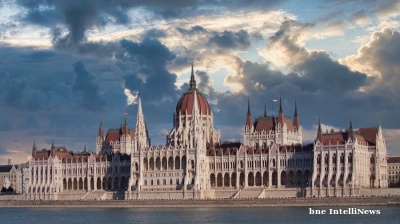On November 25, 2021, Romania ended one of its most controversial and unnecessarily prolonged political crises. The National Liberal Party (PNL) practically destroyed its coalition with the Save Romania Union (USR) and the Hungarian minority party (UDMR), both minor parties, in the aftermath of its September 2021 internal elections. The new leader of the PNL was heavily criticised for his past (while studying in the US) but, more rightly, for his current macro-economic and social policies, and finally the PNL split. The economic and social system practically collapsed. Inflation has rampaged and no measures were in place to offer employment and social protection to large groups of Romanians (including vulnerable pensioners or children) who had never been confronted with such issues under a market economy.
On top of everything, the political crisis was exacerbated by the current wave of the pandemic (the so-called fourth wave since its start in March 2020). The educational process at all levels has been heavily impacted, with negative consequences for the whole society. The highest Romanian authorities made a major mistake during the summer of 2021 when they triumphantly announced that the pandemic was defeated! It was not to be. On the other side, the church has had (and in a way still has) an unclear attitude during the last two years of the COVID-19 pandemic. Talking into account the trust which has been placed in the church by the population, the Romanian Orthodox Church was forced to clarify its position regarding the vaccination of the population at large (which improved since), but this happened only in the autumn of 2021 during the fourth wave of the pandemic and in the midst of the political crisis. This happened quite late and the damage was already done.
One of the first challenging economic issues for Romania during this political crisis and pandemic was inflation. Of course, Romania does not have hyper-inflation as in the early ’90s (the consumer price index was then at the level of 296% in 1996 (end-of-period)). However, the National Bank of Romania (BNR) has signalled since August 2021 that current inflation is out of control. The increase of domestic prices is obvious and determined by many fundamental economic factors, amongst which first and foremost are the large budgetary deficits registered in the last two years. In fairness, it should be noted that these budgetary deficits were registered in a pandemic context unheard of in the recent health history of the country and of the world. Also such large deficits have been registered by other European Union (EU) members as well.
In accordance with the data published by the BNR, the annual rate of inflation increased to 5.25% in August 2021 and to 6.29% in September 2021. This is well above its initial target of 2.5% (+/- 1%). More recently, it was estimated by the National Institute for Statistics (INS) at 7.94% for October 2021. This has happened due to, amongst others, the international increase of the natural gas price and by the domestic increase of prices for gas and diesel oil. The forecasts for the whole year are even more concerning taking into account the increase of demand for energy products for the winter season which is coming and the persistent lack of supply of some foodstuffs due to the slowing down of economic activity in the current pandemic situation.
One other direct result of the pandemic was the dramatic increase of the trade and current account deficits of the country and consequently the increase of its foreign debt. Basically, during the political crisis and more generally during the last two years since the PNL was running its coalition of right-wing parties, the domestic problems were “hidden” through heavy external borrowings. This is not sustainable in the medium- or long-term. The cases of the former Yugoslavia (which ended up in a war in the ’90s, followed by dissolution of the country) and, more recently, that of Greece which used external funding to cover public expenses, including pensions, are more than illustrative. For Romania, this key indicator regarding the macro-economic equilibria reached the level of €133.6bn as of end-September 2021 (a level estimated to be above 55% of GDP at current prices and the November leu to euro exchange rates). So, an increase of €27.6bn of foreign debt in only two years!
Table 1: Romania - External debt during the last two years, €bn
 Source: BNR data.
Source: BNR data.
During the last two years, the evolution of the interest rates was lagging behind inflation as well and the leu’s depreciation on the international markets was not properly reflected by the average wage, whose increase was also slower. This had disastrous effects on the savings of the population. Basically, whoever had savings became poorer and poorer in absolute and/or relative terms. This is currently happening as the annual inflation rate is much higher than the level of interest rates granted by the commercial banks for the population’s savings both in lei and foreign currencies. Despite the relative reduction of their purchasing power, total deposits increased to 472.8bn of lei equivalent as of end-September 2021, as compared with RON440bn as of the end of last year and +14% as compared to September 2020.
Under such circumstances, the increase by the BNR of its monetary policy rate from 1.25% per year to 1.50% per year starting with October 6, 2021 and again from 1.50% to 1.75% starting on November 10, 2021 were steps in the right direction aiming to reduce consumption and stave inflation. Despite these, it should be clearly said that inflation cannot be reined in only by monetary instruments. Fiscal measures are imperative. The political crisis in the country during the last two to three months did not help in this respect. The interference of the previous government ousted from power in October 2021 in the allocation, based on political criteria, of the state budget financial resources and of the EU funds has led to veritable financial chaos. The prospects are not at all encouraging and the 2021-2022 winter will be a difficult season for many Romanians from many points of view. A recent social study estimated that four out of 10 Romanians are under the poverty level.
One other fundamental aspect is related to the use of the labour force during the few last years. Many Romanian companies were purely and simply destroyed or sold as iron scrap. A case in point is that shown in Figure 1. It could be said, without any doubt, that during 32 years of transition, and more so during the current pandemic and political crisis, the Romanian society has lost a part of its national fibre because of some major mistakes on the political spectrum. Generally speaking, ordinary people have concerns about their daily life. Politeness and kindness are now given secondary priority because of a major lack of material self-sufficiency means, a fact which large groups of population are confronted with.
Figure 1: Romania - The well-known pump company Aversa, Bucharest, today

Source: Author’s collection
These mistakes of macro-economic policy, combined with those in the political and social sectors, also resulted in a large emigration by Romanians, especially the young ones. The resident population of the country decreased from over 23mn as of end-1989 to some 19.1mn as of January 1, 2021 (as published by INS) and the trend for the following period is not encouraging. This major social disequilibrium has led to the state’s inability to honour its commitments with regard to pension payment for the more than 5mn retired citizens. In real terms, pensions did not increase during 2021. The social contract was broken and the impact of such a situations has not yet materialised in full. Corrective measures in this respect, including through the National Plan of Recovery and Resilience (NPRR) approved by the EU by end-September 2021, are more than needed.
A coherent strategy for the medium and long term is also a fundamental requirement in the current political context. The new government in office since November 25, 2021 is led by a former general in the Romanian Army. The Ciuca government will have the support of a “grand” coalition of the Social Democratic Party (PSD), PNL and UDMR, but the issues it has to handle are a long list of very urgent tasks. Investment of 7% of GDP announced for 2022 is by far insufficient. Like in any political coalition, there will be backtracks, wrong steps and not so good measures and the likes, but at least the political circus of the last three months is over. If the pandemic is also eradicated this time around, the results will be more than anyone can expect, but only time will tell.
Meanwhile, Romania is preparing to celebrate on December 1 its 103rd anniversary and its National Day.
Many Happy Returns! La Multi Ani!
Alexandru M. Tănase, PhD, is an independent author and former associate director, senior banker at the EBRD and former IMF Advisor. Together with Mihai Radoi, he is the author of a book entitled Finance and Current Monetary Issues published in October 2021. The book was accepted by the British Library (www.bl.uk) and is already in the catalogue of Central Library for Universities Carol I-st Bucharest (www.bcub.ro) and many other libraries. These are personal views of the author and are not of any quoted institution (including, but not limited to, those of the IMF, EBRD and BNR). The assessment and data are based on available information as of end-November 2021.
Opinion

Don’t be fooled, Northern Cyprus’ new president is no opponent of Erdogan, says academic
Turkey’s powers-that-be said to have anticipated that Tufan Erhurman will pose no major threat.

COMMENT: Hungary’s investment slump shows signs of bottoming, but EU tensions still cast a long shadow
Hungary’s economy has fallen behind its Central European peers in recent years, and the root of this underperformance lies in a sharp and protracted collapse in investment. But a possible change of government next year could change things.

IMF: Global economic outlook shows modest change amid policy shifts and complex forces
Dialing down uncertainty, reducing vulnerabilities, and investing in innovation can help deliver durable economic gains.

COMMENT: China’s new export controls are narrower than first appears
A closer inspection suggests that the scope of China’s new controls on rare earths is narrower than many had initially feared. But they still give officials plenty of leverage over global supply chains, according to Capital Economics.




